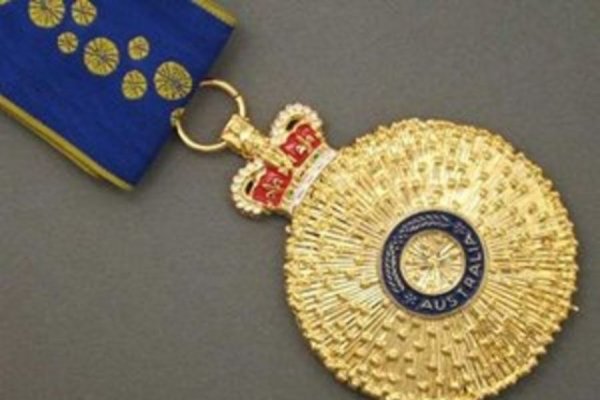For over 30 years, men have dominated the Order of Australia, receiving, on average, over 70% of the awards. Change is coming, slowly, with more women being honoured each year. But the momentum will not be sustained without structural reform.
Gender equality in the Australian honours system – when it finally arrives – will be a visible recognition of the contribution made by women in professions, business and the community.
Receiving an Order of Australia usually involves a confidential nomination by a member of the community. Since 2017, the number of women nominated has doubled, largely due to the efforts of our small movement Honour a Woman and our ambassadors, as well as increased media attention, proactive State government initiatives and awareness raising by the Office of the Governor General.

However, increasing the number of nominations of women of alone will not result in gender equality in the awarding of honours. We believe there are two further key components that are necessary to result in a more equal – and fairer – system.
The first is that all state and territory governments should introduce practices that promote the nomination of women in their jurisdiction. The second is that gender targets at all levels of the Order of Australia are necessary to ensure a merit-based balance
There are four levels in the Order of Australia and the Governor-General has the authority to set annual gender quotas for each level. We suggest quotas of around 40% each for both men and women and allow a 20% flux either way, for the four levels of the honours which are OAM (general), AM (Member), AO (Officer) and the highest level AC (Companion).
“It is a devastating thing to say to half the population that we value your contribution less than men”
As Jane Caro, one of our ambassadors has said: “It is a devastating thing to say to half the population that we value your contribution less than men.”
It has been noted in recent years, the Australian Honours tend to place greater value on work and social status rather than wider aspects of community connectedness and service.
Many people seem to take for granted the jobs women do and their contributions to the broader community. In order to achieve gender parity, we believe the very idea of merit and how it is recognised needs to be challenged.
Too often, the Honours appear to reward those people who are the mirror image of previous winners; in other words they reward ‘people like us’.
This level of unconscious bias means that both nominators and selection committees aren’t entirely cogniscant of the impact of their decisions. That must be challenged.
At the same time, community awareness of the nomination process is limited. The submission writing process and securing referees is both cumbersome and time-consuming.
There have been attempts to address this with the creation of an online nomination form – and not before time. However, the awards are almost exclusively for ‘old people’ with contributions from Australia’s young people rarely recognised.
It is better to write a nomination than an obituary
It is better to write a nomination than an obituary. After all, Australia’s most prestigious awards should promote living role models of all persuasions as well as show gratitude for service at the end of one’s career.
If we don’t address this now, the awards will increasingly be viewed as anachronistic and elitist. The Department of Prime Minister and Cabinet should take responsibility for developing a national strategy to raise awareness and to celebrate the Order of Australia awards at all levels.
State and Territory governments can also play a part, as members of the Council for the Order of Australia, and through proactively nominating outstanding women. The Victorian government has led with the appointment of an awards officer, and some state governments are already taking steps to ensure that women who receive state-based awards (such as the NSW Local Women of the Year and the Women’s Honour Rolls in Tasmania and Victoria) are subsequently nominated for an Order of Australia.
Gender equality in the Order of Australia is within sight with 50:50 in 2020 a realistic goal. We will find out on Sunday how we are progressing.
Dr Elizabeth Hartnell-Young, Carol Kiernan and Ruth McGowan are co-founders of Honour a Woman; Facebook and Twitter @HonouraWoman). Honour a Woman, a volunteer movement seeking gender equality at all levels of the Order of Australia, is lobbying to ensure that gender balance is achieved and sustainable within the awards process.




